The Most Important Pan In Your Kitchen
A saute pan is a kitchen workhorse you’ll use for everything from searing meat to making sauces. Its versatile design—featuring straight sides and a wide, flat base—makes it ideal for browning, frying, and simmering. But with so many materials, sizes, and features available, finding the right sauté pan can feel overwhelming.
Start by thinking about how you cook. Do you need a pan that heats quickly for fast weeknight meals? Or do you want something heavy-duty that retains heat for slow-cooked dishes? The right choice depends on your cooking style and the types of dishes you prepare most often.
Materials matter, too. Stainless steel pans are durable and nonreactive, perfect for deglazing and making pan sauces. Nonstick options are great for delicate foods like eggs or fish. Cast iron excels at retaining heat, making it ideal for browning or frying. Some pans even come with oven-safe handles, allowing you to finish a dish in the oven.
In this post, you’ll learn what to look for when choosing a sauté pan, from materials and sizes to handle design and lids. By the end, you’ll know how to pick a pan that suits your needs and helps you create delicious, evenly cooked meals every time.
What is a sauté pan?
A sauté pan is a versatile piece of cookware designed for tasks that require precise heat control and enough space to cook evenly. It features straight sides, a wide, flat base, and a long handle. Often, sauté pans come with a lid, which makes them perfect for browning, simmering, or cooking foods in liquid.
Unlike a frying pan with flared, sloping sides, a sauté pan’s straight sides provide more surface area and prevent liquids from spilling over. This design works well for braising or making pan sauces because it holds liquids more effectively. The flat base ensures even heat distribution, making it ideal for searing or browning.
While frying pans excel at quick, high-heat cooking, such as flipping pancakes or stir-frying, sauté pans give you more control over techniques like reducing sauces or cooking in stages. The lid is another key difference. A sauté pan traps heat and moisture, allowing you to simmer or steam foods easily—something a frying pan rarely does as efficiently.
In short, a sauté pan is your go-to for versatile cooking, combining the functionality of a frying pan with the ability to handle sauces and liquids seamlessly.
Learn How To Sauté
What are important features of a good sauté pan?
Design
The saute pan has a wide, flat bottom, so there is enough room for the ingredients without crowding them. You want the ingredients to brown quickly without burning or steaming. For example, if you are sautéing chicken breasts, if the pan is too crowded, the breasts will steam rather than brown, and the end result will be soggy.
Another advantage of a flat bottom is when making the pan “jump” on the burner. A flat bottom is a lot easier to slide back and forth than a curved pan.
Most importantly, a flat bottom provides even heat distribution. When cooking a couple of flounder filets, you want the pan’s heat to be uniformly distributed throughout the entire bottom; otherwise, you’ll end up with unevenly cooked food.
The sides of a sauté pan are straight and also low when compared to a sauce pan. The straight sides help when making a pan sauce by keeping the liquids from spilling over the sides. They also help keep the food in the pan when making it “jump.”
(I’ve got to tell you, I don’t do much pan jumping when I’m sautéing. I’m just trying not to overcook the food but I do appreciate the straight sides when I’m stirring during reduction.)
The low sides help circulate air which helps prevent the food from getting soggy and keep the overall weight of the pan down so you can move it around a bit.
Handle
You want a long handle on your sauté pan for several good reasons. First, you’ll often move the pan around on the burner. While you might not be flipping ingredients mid-air, you’ll still shake the pan back and forth to keep things moving.
You’ll also likely transfer the pan from the stovetop to the oven to finish cooking. A long, sturdy handle gives you better control and a more comfortable grip, so always choose pans that feel good in your hands.
Regardless of what you’re cooking, you need a well-made sauté pan with a handle you can trust to stay securely attached. Look for pans with handles fastened by heavy screws or rivets for long-term durability.
Many modern sauté pans come with handles designed to resist heat when used on the stovetop. This feature makes it easier to move the pan from the burner to the sink without needing oven mitts. However, be cautious—“heat-resistant” doesn’t mean “heat-proof.” Always use oven mitts when taking cookware out of a hot oven, so ensure the handle is oven-safe.
Although wooden handles stay cooler than metal ones, they can’t go in the oven. If you plan to cook both on the stove and in the oven, skip the wooden handles and opt for metal instead.
Lid
You want a cover for your pan that fits tight. Besides using my sauté pan for sautéing, I often use it for braising where a tight cover is important.
Materials
Sauté pans come in a variety of materials, each offering unique benefits for your cooking. Choosing the right material can make a big difference in how your food turns out. Here’s what you need to know:
Stainless Steel
Stainless steel sauté pans stand out for their durability and versatility. They resist rust and stains, making them easy to maintain. Stainless steel doesn’t react with acidic or alkaline foods, so you can cook anything from tomato sauces to citrus glazes without worrying about off flavors. While they don’t conduct heat as well on their own, many stainless steel pans have an aluminum or copper core to improve heat distribution.
Nonstick
Nonstick sauté pans are perfect for delicate foods like eggs, fish, or pancakes. Their smooth surface prevents sticking, making cleanup quick and easy. However, they aren’t ideal for high-heat tasks like searing because the coating can degrade over time.
Cast Iron
Cast iron sauté pans excel at heat retention and even cooking. They’re great for tasks like browning meat or frying. While they take longer to heat, they maintain steady temperatures. With proper seasoning, cast iron develops a natural nonstick surface.
Copper
Copper sauté pans offer unmatched heat conductivity, heating quickly and evenly. Chefs love them for their responsiveness, but they require regular maintenance to prevent tarnishing. Most copper pans are lined with stainless steel to prevent reactions with food.
Carbon Steel
Carbon steel combines the heat retention of cast iron with the lightness of stainless steel. It heats quickly and evenly, making it great for high-heat cooking. Like cast iron, it needs seasoning to maintain its nonstick properties.
Aluminum
Aluminum pans are lightweight and excellent heat conductors. They heat quickly and evenly, making them ideal for everyday cooking. However, aluminum is soft and can react with acidic foods, so anodized or non-reactive coatings are often added for durability.
Each material brings its own strengths to the kitchen. By understanding these options, you can choose the sauté pan that perfectly fits your cooking style.
Size
Sauté pans come in various sizes, each designed for specific cooking tasks. Choosing the right size depends on what you plan to cook and how many people you serve. Let’s explore the options and their uses.
Small (8–10 inches)
Small sauté pans are perfect for individual portions or small-batch cooking. They work well for tasks like frying a single chicken breast, sautéing vegetables for one or two people, or making a small sauce. These pans heat quickly and are easy to handle, making them ideal for quick, everyday meals.
Medium (10–12 inches)
Medium saute pans strike a balance between versatility and capacity. They’re the most common size in home kitchens and are great for family meals. You can brown several pieces of chicken, sauté vegetables, or simmer sauces in this pan. Its size offers enough room for even cooking without overcrowding, which is essential for browning and caramelization.
Large (12–14 inches)
Large sauté pans excel when cooking for a crowd. They provide plenty of surface area, so you can sear multiple pieces of meat or cook larger quantities of food at once. They’re ideal for one-pan meals, like stir-fries or braises, where you need space to toss and mix ingredients evenly.
Extra-Large (14 inches and up)
Extra-large saute pans are perfect for big-batch cooking or entertaining. They can handle large cuts of meat, large servings of vegetables, or large family-style dishes. While they require more storage space and can be heavier, they’re a lifesaver when cooking for parties or meal prep.
Each sauté pan size serves a unique purpose, so consider your cooking habits and the number of people you usually cook for. The right size will allow you to cook efficiently and achieve the best results.
Buying Sets or Individual pans
When choosing cookware, you’ll face the decision of buying individual pans or investing in a complete set. Each option has its advantages and disadvantages. Let’s break it down so you can make the best choice for your kitchen.
Buying Individual Pans
Advantages:
- Customization: You can select specific pans that match your cooking style and needs. For example, you might invest in a high-quality stainless steel sauté pan but opt for a nonstick skillet for eggs.
- Budget Flexibility: Buying one pan at a time spreads out costs, letting you prioritize quality over quantity.
- Space Saving: If your kitchen has limited storage, choosing only essential pans helps avoid clutter.
- Specialization: You can mix and match materials and brands, ensuring each pan is perfect for its purpose.
Disadvantages:
- Time-Consuming: Building a collection takes more time and research.
- Higher Per-Piece Cost: Individual pans often cost more per item compared to those in a set.
Buying a Complete Set
Advantages:
- Consistency: Sets ensure a uniform appearance and performance, making your kitchen look cohesive.
- Cost-Effective: Sets usually offer better value, with a lower price per pan.
- Convenience: A set provides everything you need at once, eliminating the guesswork.
Disadvantages:
- Unnecessary Pieces: Sets often include pans you may rarely or never use, like small saucepans or extra lids.
- Less Flexibility: You’re limited to one brand or material, which might not suit every cooking task.

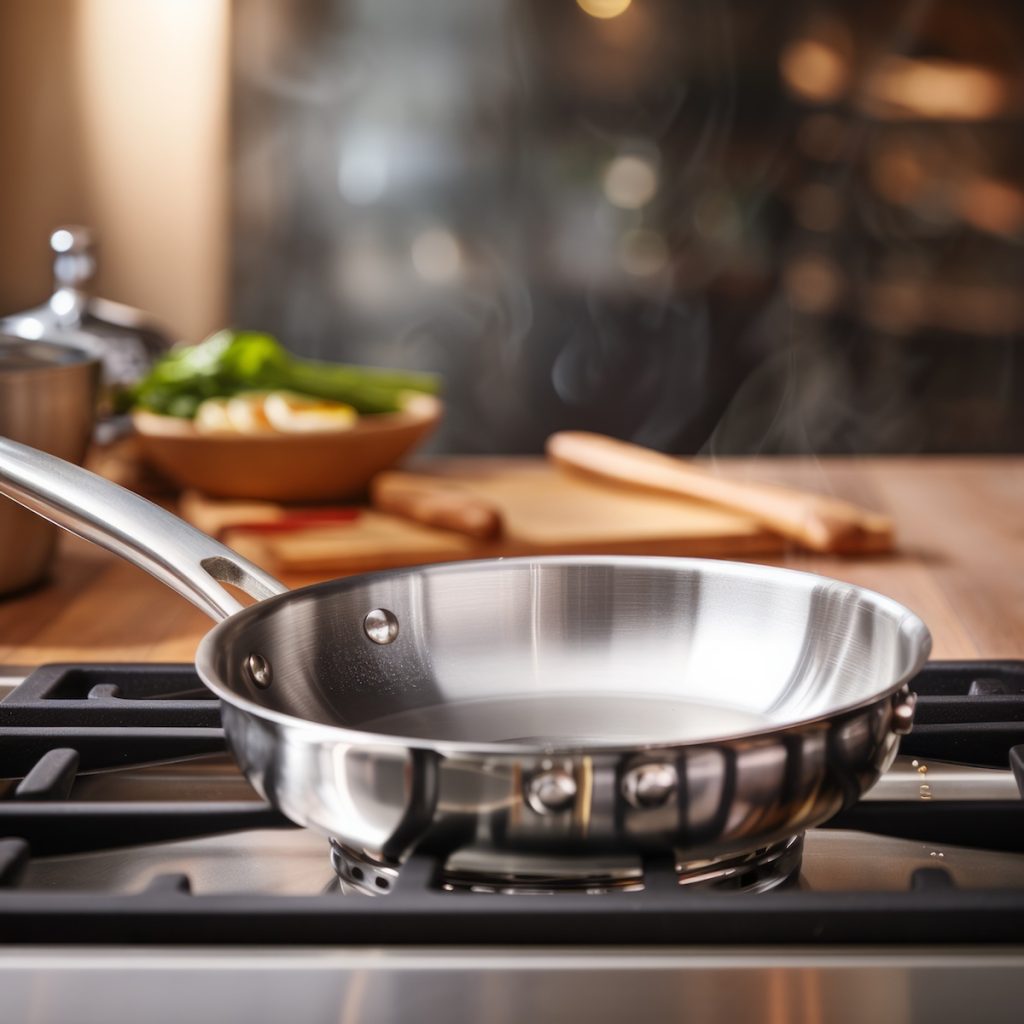
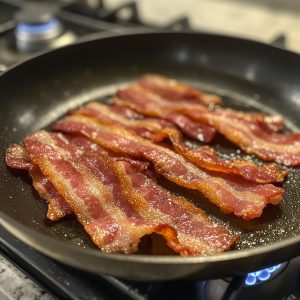
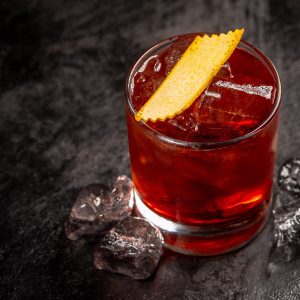
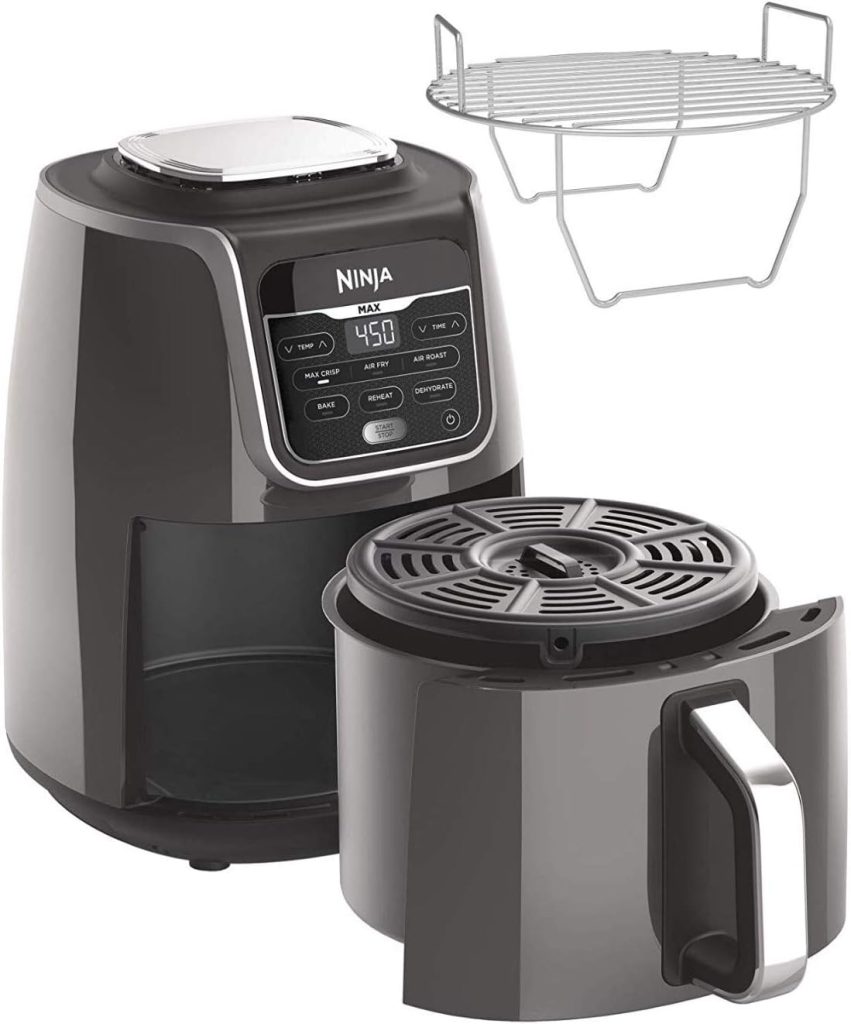
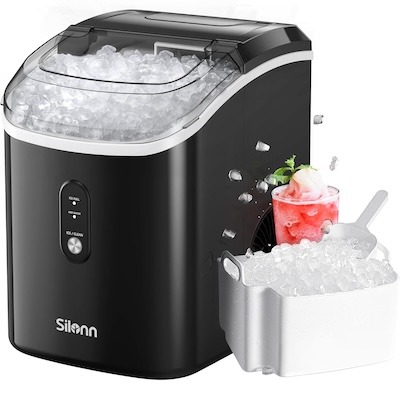
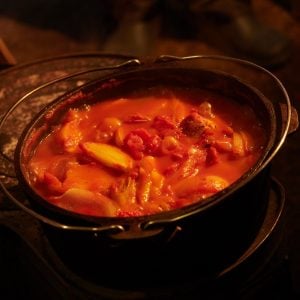
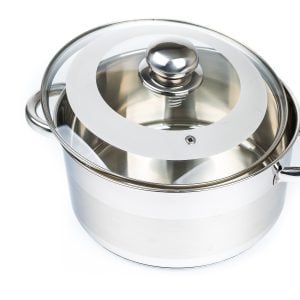
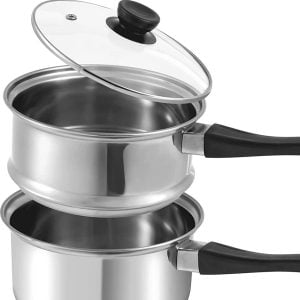
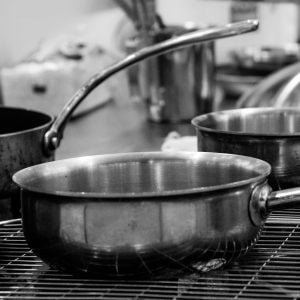
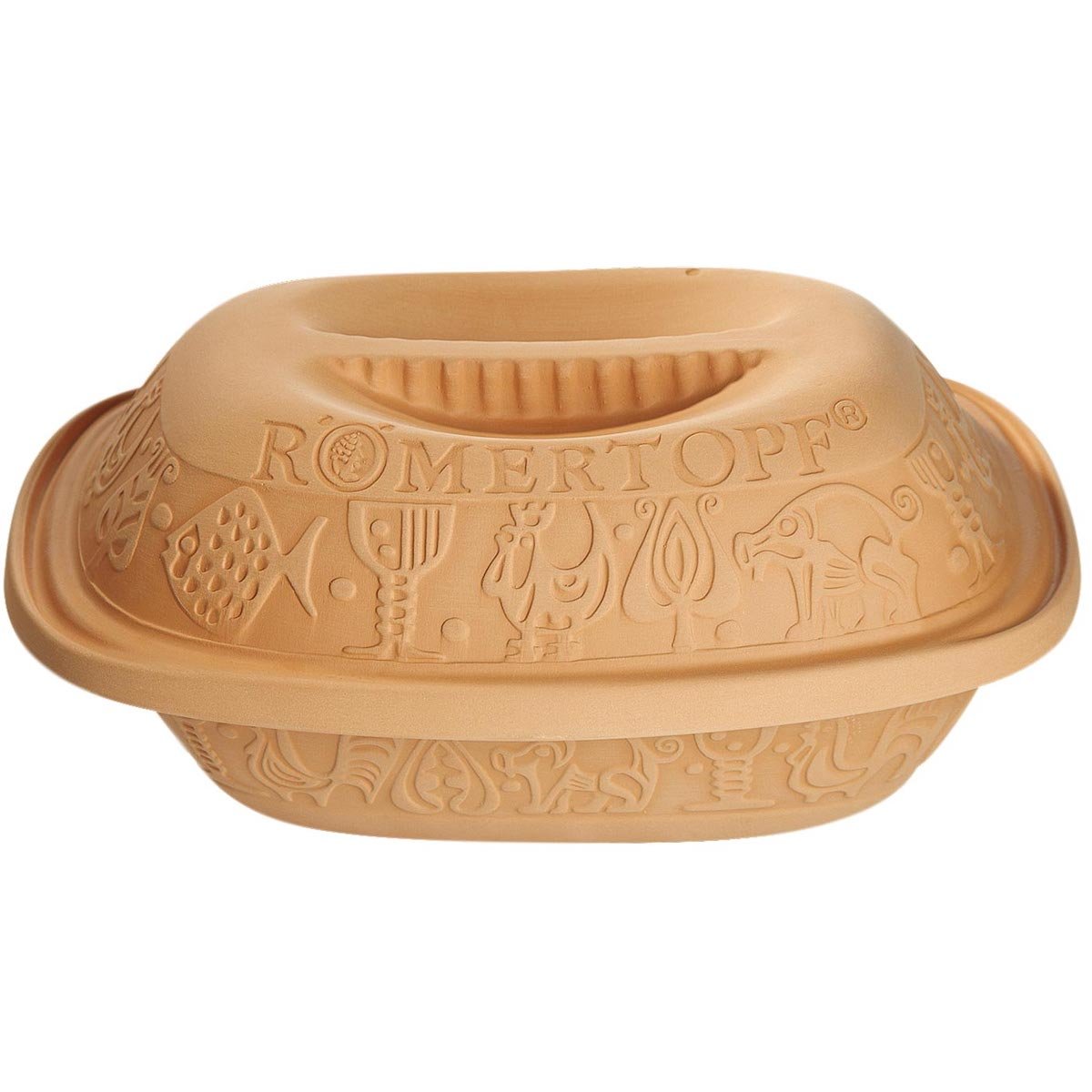
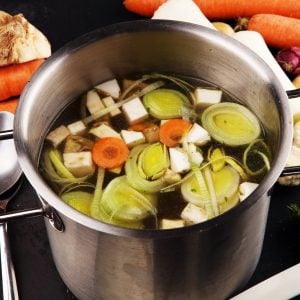

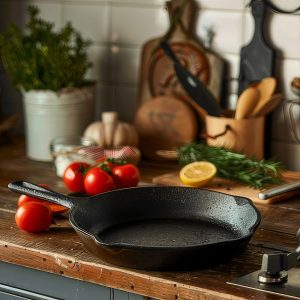

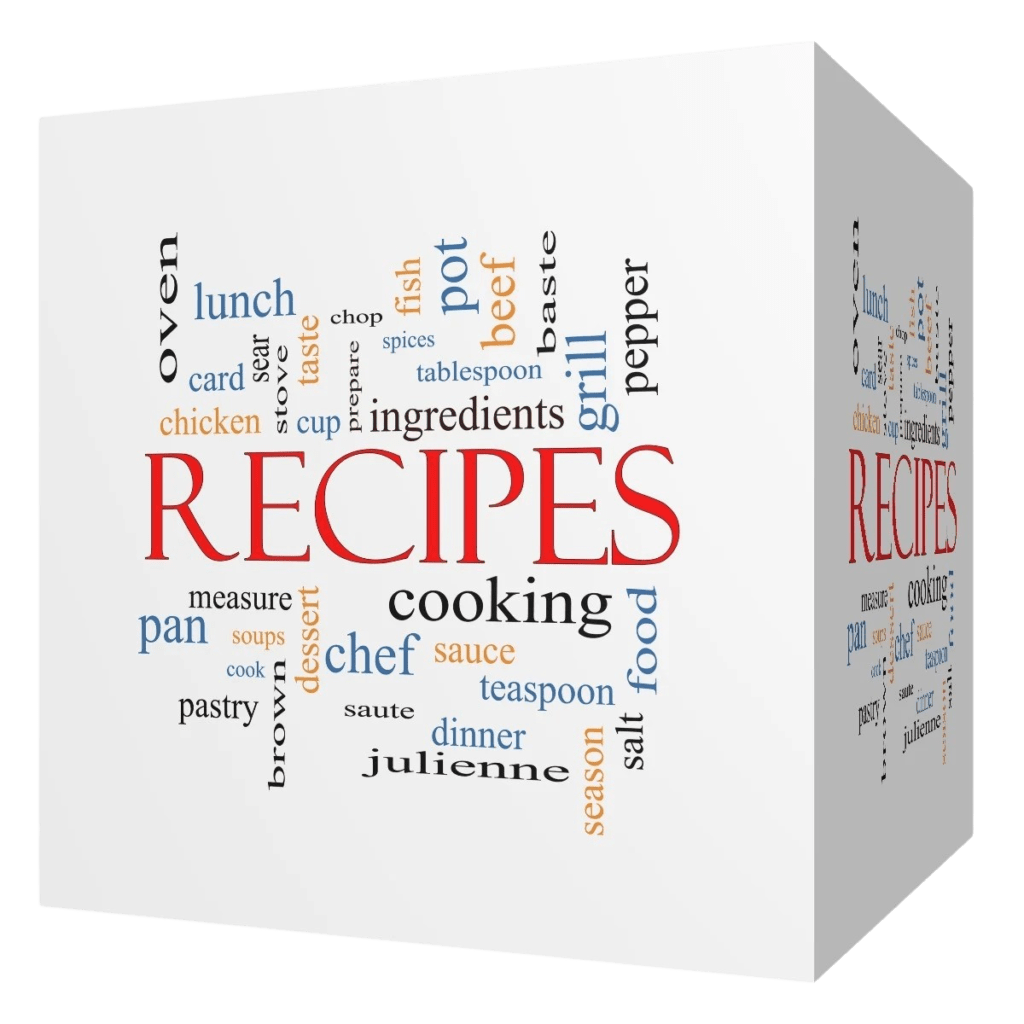
12 Responses
Very helpful information. Thank you.!
You are very welcome Kat.
Thanks for all this info! I was previously looking at a Le Creuset steel shallow casserole, which seemed to do it all: sautéeing, stir-frying and being good for the oven. But its big, bowl-shaped design and small ‘ear’ handles would make it a nightmare to agitate, something I hadn’t considered. If your cookware doesn’t allow you to develop useful skills I guess there’s no point in buying it, especially when we’re talking a premium brand.
I would really like to find a heavy gauge (4 mm) 7″ aluminium vertical sided sauté pan in the UK. They sell them in the US for around $9. I use them at work and they’re ideal for one / two person portions.
Gary
Anybody have any suggestions for Gary?
A bit late n the day but you should look at Nisbetts catering website where they have a huge range of fry and sauté pans in non stick and bare metal.
what kind of pan is best for making spaghetti meat sauce…a 4 qt saute pan or a sauce pan?
I think it depends on how much you are preparing but I typically use a large sauce pan or even stock pot if I’m preparing a lot.
Hey, great website, lots of useful information. I will be cooking for two people mostly, I was wondering whether I should go with a 3 quart or a 5 quart pan. Using the pan mostly for meats and reduction sauces. Thanks!
For two people, I think you can get away with a 3 quart saute pan but what if you are having friends over and need to cook for 4 or 6 people? If you are looking for an everyday cooking pan for pan frys and pan sauces and think the 3 quart is too small and the 5 quart is too big, why not try a 4 quart? Also, I would go to a cookware store or a department store that has a cookware section and put the pans in your hands to figure out which is right for you.
I just love to cook in stainless steel cookware.
Yes! I love my all clad copper core. So far, I’ve 3 qt saute pan, 5.5 qt dutch oven and 3 qt saucepan. I may add a 2/3 qt saucepan in the near future. I threw away all my old kitchenwares.